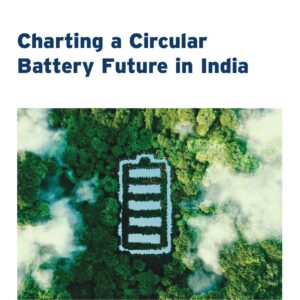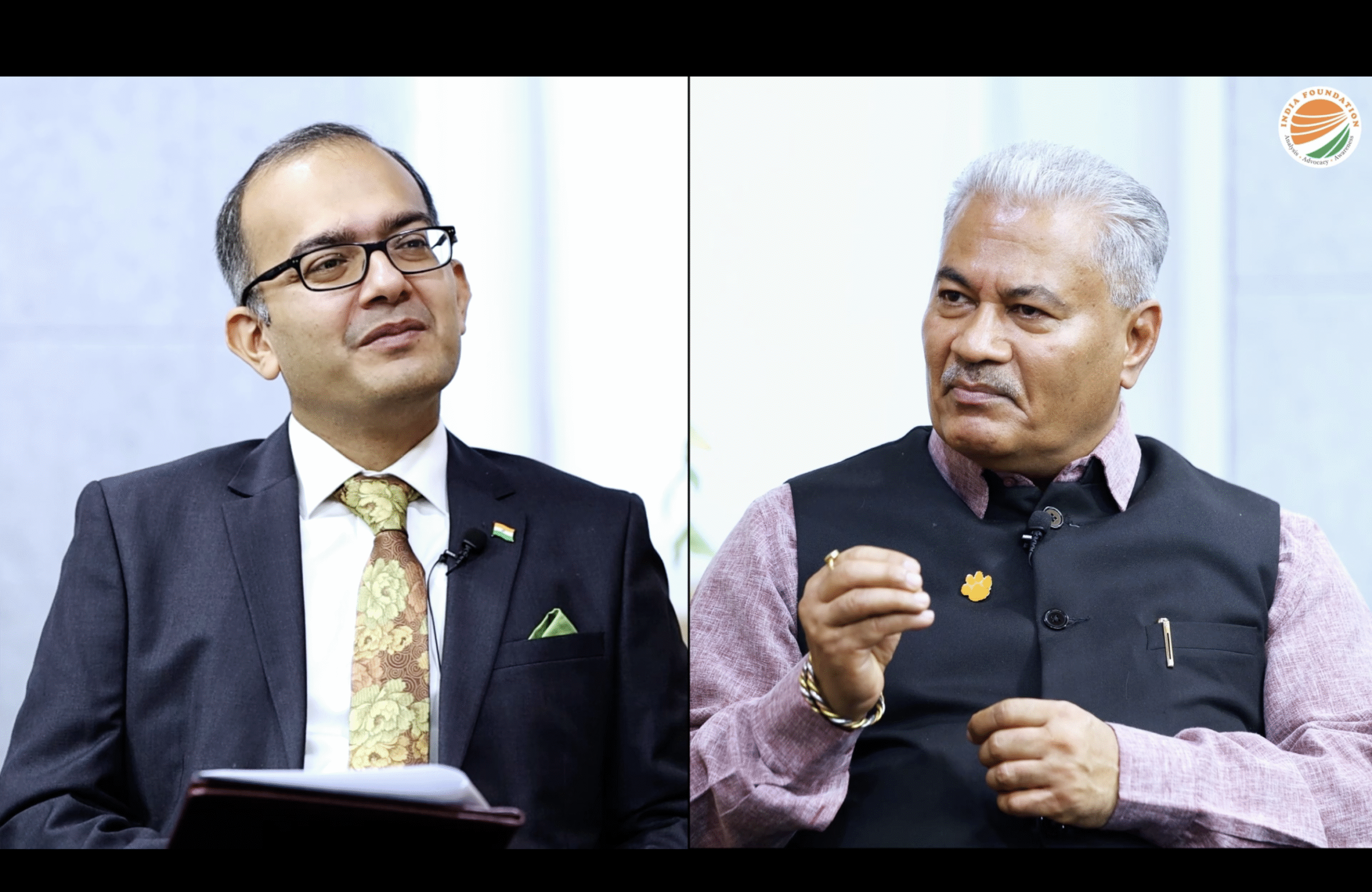There was a time when development goals were pursued without considering environmental consequences. Examples are abundant. The construction of the Panama Canal between 1880 and 1914 brought significant economic, strategic, and technological benefits, revolutionising global trade by enabling shorter shipping routes and lower transportation costs. However, it also caused immense human suffering and long-term ecological damage to the isthmus. Similarly, rapid industrialisation and unchecked factory expansion during the Industrial Revolution in late 18th to 19th-century Europe and the U.S. led to urban air and water pollution, widespread deforestation, and health crises in many cities. Colonial plantation and mining projects across Africa, Asia, and Latin America, aimed at exploiting land for rubber, cotton, and minerals, resulted in extensive deforestation, soil exhaustion, social displacement, and cultural loss.
Recently, we have seen many man-made disasters resulting from a lack of foresight in addressing environmental issues. The deadly radiation leaks at Chernobyl Nuclear Power Plant in the former USSR in 1986 and the Bhopal gas tragedy in 1984, which killed thousands and continues to cause environmental and health problems, serve as clear examples. The Three Gorges Dam in China displaced over a million people and significantly altered river ecosystems. Similarly, the Aswan High Dam in Egypt in the 1960s reduced Nile fertility, led to declining fisheries, and prompted the relocation of Nubian communities.
Clearly, environmental issues must be integrated into economic and security considerations. The occurrence of ecological disasters, however, does not diminish the significance of security or development concerns. Instead, all three must be addressed together. The discussion can never be about choosing between development, security, or environmental preservation. It is not a zero-sum game in which one is prioritised at the expense of the others. All three are vital concerns.
In India, a controversy recently surfaced when Ms Sonia Gandhi, the matriarch of the country’s leading opposition party, published a sharp article criticising the Great Nicobar Island Development Project (GNIDP), also known as the “mega-project on Great Nicobar”.[1] Calling the Rs 72,000 crore initiative a “planned misadventure,” she writes that the project threatens the existence of the island’s indigenous tribal communities, endangers one of the world’s most unique flora and fauna ecosystems, is highly susceptible to natural disasters, and has been hastily approved without adequate legal and social safeguards. While subtly recognising the project’s strategic and economic value, she asserts that the disaster risk far exceeds the potential benefits.
This form of extreme positioning is equally disruptive. We have seen instances where environmental issues have been weaponised to stall development projects. The Narmada Bachao Andolan (NBA) is a prime example. The movement emerged in opposition to the construction of dams on the Narmada River, particularly the Sardar Sarovar Dam in Gujarat. The dam was finally inaugurated in 2017, after decades of dispute that began in 1985. While genuine social and environmental concerns may have initially driven the NBA, it soon deteriorated into ideological opposition to large-scale projects. It was influenced by foreign actors, especially Western NGOs and advocacy groups, which funded the protests to advance their own interests. Emotional imagery from the NBA highlighted the negatives, showing submerged villages and the poor on hunger strikes. They received celebrity endorsements, but the movement was city-led, with the emotional narrative overpowering factual assessment.
A fact-check of the Sardar Sarovar Project, comparing the NBA’s claims to the actual outcomes, is enlightening. The NBA claimed that over 3 lakh families would be permanently displaced; however, fewer than 2 lakh people were affected, and nearly all received land-for-land compensation. Many displaced communities gained access to schools, electricity, and healthcare for the first time. The NBA also exaggerated the environmental impact, claiming massive deforestation and ecological collapse, but no such large-scale loss of biodiversity was recorded after stabilisation. On the benefits side, the project resulted in over 18 lakh hectares of land irrigated, piped water reaching millions of homes, and a surge in power generation capacity. An independent cost-benefit analysis by IIM Ahmedabad in 2018 found a benefit-to-cost ratio of over 2.5:1 over 30 years, indicating a significant net public gain.[2] Surveys by the Centre for Social Studies (CSS), Surat (2016) found improvements in income, education, and access to services for most resettled households compared to pre-submergence levels. All this indicates broad positive social outcomes, though, of course, some localised grievances remain.
This is not to imply that environmental concerns are unimportant. They are vitally important, and including them in the development agenda is part of the process. Ignoring environmental issues harms society, but so does a lack of development and neglect of security issues. A comprehensive approach must include all three. That is why Ms Sonia Gandhi’s article is problematic. Its focus is singular, dealing only with the threat to the environment. The mitigation strategies that form part of the project have not been mentioned. The economic and strategic payoffs that the project brings to the nation have also not been highlighted.
When environmental concerns outweigh security and development priorities, we risk undermining national interests, thereby favouring hostile external powers. A notable example is Vedanta’s Sterlite copper smelter in Thoothukudi, Tamil Nadu, which in 2018 was forced to shut down by activists organising protests over alleged severe environmental pollution. Consequently, India, which had previously been a net exporter of refined copper, became a net importer. In 2023, the Tamil Nadu governor, Mr RN Ravi, claimed that the anti-Sterlite protests in 2018 had been funded by foreign interests and aimed at hindering progress.[3] Regardless of whether the Governor’s claim is valid, the fact remains that the shutdown was not in the country’s best interests. Environmental concerns should have been adequately addressed; the shutdown was unwarranted.
Earlier, in Tamil Nadu, organised protests by NGO’s against the Kudankulam Nuclear Power Plant (KKNPP) in Tirunelveli district took place between 2011 and 2013. The protesters heightened fears about the potential for a nuclear disaster and radioactive contamination of the sea, despite the Indian government and Atomic Energy Commission asserting that the plant was safe, modern, and vital for India’s energy security. In an interview given to Science Magazine in 2012, the then Prime Minister, Dr Manmohan Singh, stated that, “The atomic energy programme has got into difficulties because these NGOs, mostly based in the United States and Scandinavian countries, don’t appreciate the need for our country to increase the energy supply.”[4] He suggested that some NGO’s received foreign funds to fuel opposition to the plant. This charge would not have been made lightly. It had much to do with geopolitical and commercial rivalries between Russia and Western countries. The KKNPP was built under an India–Russia intergovernmental agreement in 1988 and 1998. Moscow also offered to build up to six reactors at Kudankulam. After the U.S.–India Civil Nuclear Agreement of 2008, Western companies seeking major reactor contracts in India were believed to be behind these protests to undermine Russia’s first-mover advantage. While all this is speculative, there is enough evidence to suggest that environmental issues can be weaponised to impede a country’s growth.
Environmental concerns were also used to slow down infrastructure development in Eastern Ladakh and in Arunachal Pradesh. This worked to China’s advantage, which had developed its communication infrastructure right up to the LAC. Thankfully, over the past decade, a lot of effort has gone into addressing the shortcomings of earlier years, as a result of which India is today better prepared to take on any hostile military action by China.
Let us now examine what the GNIDP project involves and why it is vital for India. The Andaman & Nicobar Islands have immense strategic value because of their location near the Six Degree Channel and the Malacca Strait, which is perhaps the world’s busiest shipping lane connecting the Indian and Pacific Oceans. While Indian policymakers recognised the strategic importance of the A&N Islands, it was only in the early 1980s that the Indian Navy began modest infrastructure development at Port Blair. Later, in 2001, India established its first tri-service command—the Andaman & Nicobar Command (ANC) —thus signalling its strategic intent. But further development remained limited and piecemeal, primarily due to environmental concerns. There was also an element of strategic caution. India, in line with its policy of “strategic restraint”, kept a low profile, using the Islands for surveillance and not for forward deployment. In addition, limited funding, lack of political backing and a single unified authority over the A&N Islands slowed decision-making. Consequently, a larger strategic vision encompassing an economic and defensive charter for the Island chain, in line with its strategic potential, did not materialise.
With the change in government in 2014, India’s maritime and strategic thinking also shifted. China’s growing presence in the Indian Ocean is a source of concern, and the Andaman and Nicobar Islands are key to countering Chinese designs. This also aligns with India’s Act East Policy, its strategic cooperation with the Quad and ASEAN, and the economic rationale for making a transhipment terminal to rival Singapore and Colombo. The Great Nicobar Mega Infrastructure Project, conceived by NITI Aayog and implemented through the Andaman and Nicobar Islands Integrated Development Corporation (ANIIDCO), marks the first comprehensive attempt to combine national security objectives with regional economic development in the Bay of Bengal by making the islands into a strategic economic hub.
The development spans approximately 166 km² over the next 30 years. The main elements of the project include constructing an International Container Transhipment Terminal (ICTT) at Galathea Bay on the eastern side of Great Nicobar, with a capacity of 16 million TEU once completed. The initial phase will handle 4 million TEU. Its location near the Six Degree Channel and the Malacca Strait, along key shipping routes, provides India with a strategic maritime transhipment hub. There will also be a dual-use Greenfield International Airport capable of handling both civil and military traffic, with a capacity of 4,000 passengers per hour during peak times by 2050. Additionally, a power plant and supporting infrastructure will be developed. Two new greenfield cities — one at Campbell Bay and another at Galathea Bay — are included in the project, which will also feature a cruise ship terminal, luxury tourism resorts, and an industrial hub.
The concerns raised by Ms Sonia Gandhi in her article are well known. The Galathea Bay development area covers 18 per cent of the entire region of Great Nicobar Island (GNI). The tropical evergreen rainforests are part of UNESCO’s Great Nicobar Biosphere Reserve. Development of the area will impact coastal morphology, coral ecosystems, and the tribals. However, all these issues have been considered, and mitigation strategies are in place. An environmental mitigation framework exists, including regulatory oversight and phased approvals, scientific assessment and redesign, and offset and compensatory measures. The development project is not denying environmental risks. Instead, it addresses these challenges through adaptive, evidence-based governance that balances strategic needs with ecological responsibility.
The national focus should therefore be on completing the project on time while implementing responsible ecological measures. The project is transformative. By integrating its economic and strategic potential with environmental considerations, India can strengthen its presence in the Indian Ocean region and ensure that the oceans remain free, open, and inclusive for all. The approach used for the Great Nicobar Island Development Project (GNIDP) can serve as a model, demonstrating how security, economic growth, and environmental protection are crucial elements of development and can be combined to pursue national progress.
Author Brief Bio: Maj. Gen Dhruv C. Katoch is Editor, India Foundation Journal and Director, India Foundation.
References:
[1] Gandhi, Sonia. “The Making of an Ecological Disaster in the Nicobar.” The Hindu, 10 Sept. 2025, www.thehindu.com/opinion/lead/the-making-of-an-ecological-disaster-in-the-nicobar/article70022939.ece.
[2] https://vslir.iima.ac.in:8443/xmlui/handle/11718/6922
[3] PTI, “2018 Sterlite Protests Were Fuelled by Foreign Funds, Says TN Governor.” ThePrint, 6 Apr. 2023, theprint.in/india/2018-sterlite-protests-were-fuelled-by-foreign-funds-says-tn-governor/1502650.
[4] BBC News. “India PM Manmohan Singh Blames Anti-nuclear Protests on US NGOs.” BBC News, 24 Feb. 2012, www.bbc.com/news/world-asia-india-17150953.




